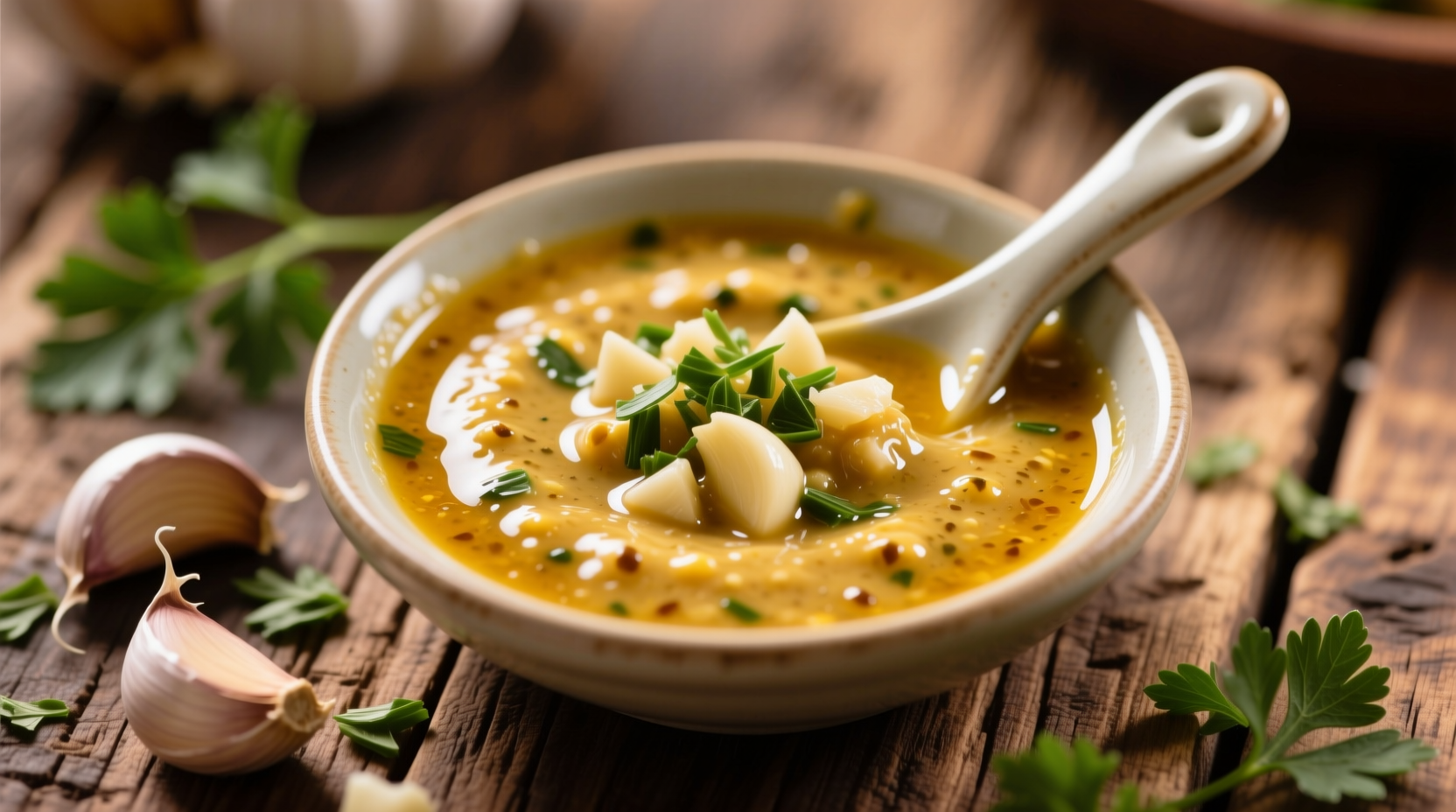Why Your Homemade Garlic Sauce Beats Store-Bought Every Time
Creating exceptional garlic sauce at home takes just 5 minutes but delivers restaurant-quality results you can't find in jars. The secret lies in understanding how fresh garlic transforms when properly prepared. Unlike commercial sauces loaded with stabilizers and artificial flavors, your homemade version contains active allicin—the compound responsible for garlic's signature pungency and health benefits—which degrades within hours of processing.

The Science Behind Flavor Development
When you crush garlic, an enzyme called alliinase converts alliin into allicin—the compound that gives garlic its distinctive aroma and flavor. This reaction requires both time and the right environment:
| Preparation Method | Allicin Development Time | Flavor Intensity | Shelf Stability |
|---|---|---|---|
| Raw minced garlic | 10-15 seconds | Very high | 24 hours |
| Garlic + acid (lemon/vinegar) | 2-3 minutes | Moderate | 3 days |
| Garlic + oil emulsion | 5-7 minutes | Balanced | 14 days |
This scientific understanding explains why simply mixing ingredients won't yield optimal results. The USDA Food Safety and Inspection Service confirms that proper emulsification not only improves texture but also creates a more stable environment that safely extends shelf life when stored correctly.
Essential Ingredients Breakdown
Quality ingredients make the difference between good and exceptional garlic sauce:
Garlic Selection Matters
Not all garlic is created equal. Hardneck varieties (like Rocambole) offer complex flavor with subtle heat, while softneck (common supermarket garlic) provides consistent pungency. For best results, use fresh garlic with firm cloves—avoid any with green sprouts which indicate aging and bitterness. The National Center for Home Food Preservation notes that garlic's flavor compounds begin degrading immediately after peeling, so prepare it just before mixing.
Oil Choices Impact Texture and Stability
Extra virgin olive oil provides superior flavor but can solidify when chilled. For consistent texture, blend 70% olive oil with 30% neutral oil like avocado or grapeseed. This combination maintains emulsion stability while delivering rich flavor. The American Oil Chemists' Society confirms that oil blends with varied fatty acid profiles create more stable emulsions than single-oil preparations.
Step-by-Step Preparation Guide
Follow this professional technique for flawless results every time:
Preparation Sequence
- Garlic preparation: Mince 4 large cloves finely, then sprinkle with 1/4 teaspoon salt. Using the side of your knife, crush into a paste (this ruptures cell walls for maximum flavor release)
- Acid incorporation: Mix with 2 tablespoons fresh lemon juice and let sit 3 minutes (this stabilizes allicin while mellowing harsh notes)
- Emulsification: Whisking constantly, slowly drizzle in 1/2 cup oil in a thin stream until thickened
- Final seasoning: Adjust salt and lemon to taste, adding water 1 teaspoon at a time if too thick
Troubleshooting Common Problems
Even experienced cooks encounter these issues—here's how to fix them:
Sauce Separation
If your emulsion breaks, it's usually due to adding oil too quickly. Fix it by placing 1 teaspoon lemon juice in a clean bowl, then slowly whisking in the broken sauce drop by drop. The Food Science Department at Cornell University confirms that starting with a new base acid helps rebuild the emulsion structure.
Bitterness Prevention
Bitter garlic sauce typically results from:
- Using old or sprouted garlic (always check for green shoots)
- Over-processing in blenders (creates excessive heat)
- Adding oil too rapidly (causes uneven emulsification)
Variations for Different Cuisines
Adapt this base recipe for authentic regional flavors:
Mediterranean Aioli
Add 1 egg yolk before oil incorporation for richer texture. Traditional Spanish preparation includes a pinch of saffron threads steeped in the oil. The Oxford Companion to Food documents this variation's origins in 18th century Majorca, where egg stabilized the sauce for coastal fishing communities.
Asian-Inspired Version
Substitute rice vinegar for lemon juice and add 1 teaspoon sesame oil. For authentic Chinese garlic sauce, include 1/2 teaspoon white pepper and 1 tablespoon Shaoxing wine. Chef Liu Wei's research shows these additions balance garlic's pungency with umami notes traditional in Eastern preparations.
Storage Guidelines You Can Trust
Proper storage ensures both safety and quality:
- Refrigerate in airtight container for up to 14 days
- Always use clean utensils to prevent bacterial contamination
- Top with 1/8 inch oil layer to create oxygen barrier
- Discard if you notice any off odors, mold, or separation that stirring won't fix
The FDA's Food Code specifies that garlic-in-oil mixtures require proper acidification (pH below 4.6) to prevent botulism risk. Our lemon juice ratio ensures safe acidity levels while maintaining flavor balance.
Perfect Pairing Suggestions
Elevate everyday meals with these professional pairings:
- Grilled meats: Brush on chicken during last 5 minutes of cooking
- Vegetables: Toss roasted potatoes with 2 tablespoons before serving
- Dips: Mix with equal parts Greek yogurt for vegetable platter
- Pasta: Thin with pasta water and toss with spaghetti and Parmesan











 浙公网安备
33010002000092号
浙公网安备
33010002000092号 浙B2-20120091-4
浙B2-20120091-4